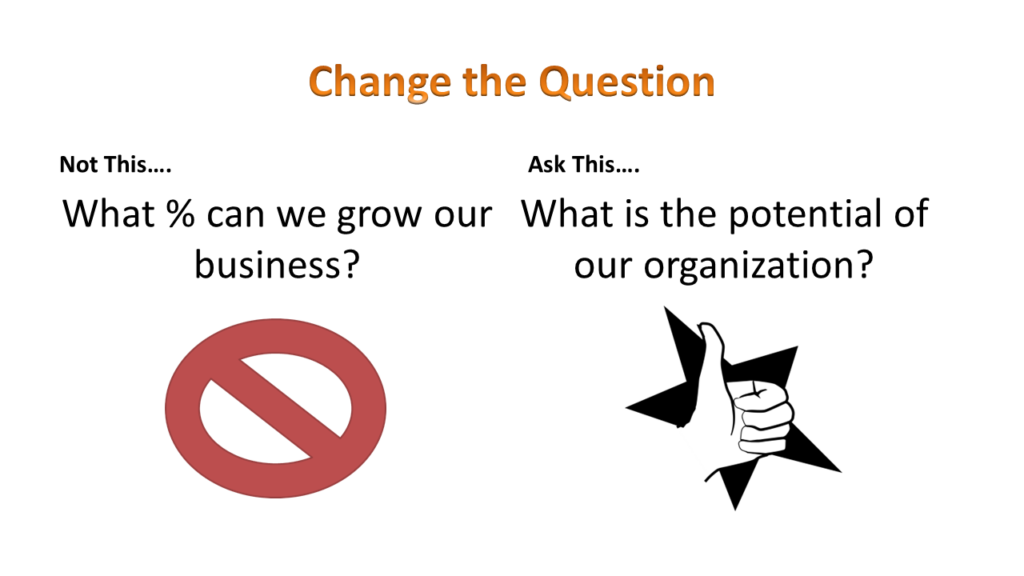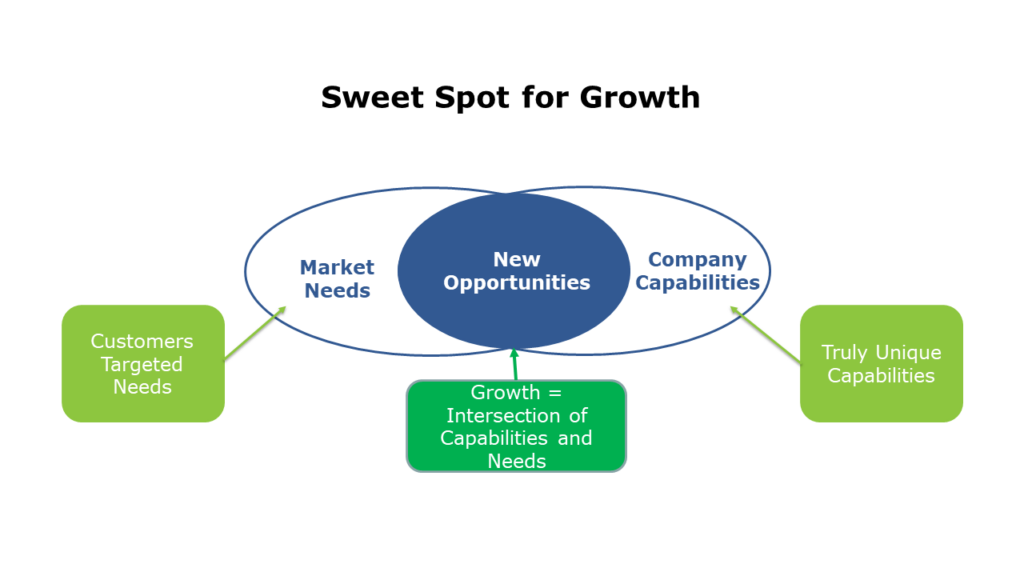One of the reasons I don’t like the term strategic planning is because it is too often viewed as a cursory process, looking through the lens of what a company has already done, to try to figure out what actions to take next The experience is often framed by the question, “How can we be better?”. Being better is a great goal for operational improvement, which can lead to short-term profitability gains or increased revenue from better selling techniques, or a product improvement. But true growth, industry-leading growth, transformational growth, rarely occurs because we focus on being better.
Being better assumes that we are already good. That our current business model, processes, target customers, products and services, and marketing are already working and relevant. That may be a false assumption. If strategic decisions don’t start with outside-in data that look at what the market is saying about the brand and its products and services through their actions of buying again, and even better, buying more, it may not be wise to continue down the same path. It may be time to take a time-out and use outside-in data about sources of revenue (customer types), product-specific profitability dollars (life-cycle insights), competitive behavior and positioning, internal capabilities and limiters, competitive advantage, and financial nuances to dissect what is working and what is not. In today’s market, with the current rate of change in technology, competitive alternatives, and customer behavior, business models don’t last much beyond ten years without fine tuning to increase their relevance. That means that companies are reaching maturity faster which suggests reaching growth plateaus faster. Something different must be done to continue the growth trajectory established during the early years.
Here are some of the most common challenges firms face that induce business gravity or resistance to growth efforts:
- Economic challenges: Plateaued revenue yielding less profit as expenses grow and/or industry cycle changes. This is a given. It will happen, which is why strategic growth plans matter.
- Time: Is leadership time spent more on growing the company or on struggling through the day-to-day issues that arise? If leaders aren’t focused on the future, who is? It is reported that the late scholar and business thinker Sumantra Ghoshal once said that leadership means making things happen that otherwise would not.
- Success and Habit: Success is good to the point it becomes habit. When we stop thinking about what to do and just keep doing what we know, often we stop asking the important questions. Is what we are doing still producing the same or better results? And if not, why not?
- Resource allocation: Are resources allocated based on history or return? Companies need to invest in customers, products, and people that deliver the best return in order to yield the best results.
- Fear: Doing what is known is always more comfortable than change, especially when careers are built on the experience of the past. But sometimes, what leaders need to do is not what they have always done.

So, what is the right question to use when faced with strategic decisions? “What is our potential?” It may seem like a subtle change from the more commonly asked “How can we be better?”, but it yields a significantly different outcome. Defining potential considers two things: 1) what is the business capable of achieving based on leverageable and unique capabilities? In other words, what is the key benefit the company delivers to the market that distinguishes it from other alternatives? And 2) what does the market give the brand permission to do? It requires determining what customers think your business is capable of delivering and how far the brand equity stretches. When you ask and answer these two questions, you are in a much better position to identify who your primary target customers are—the ones who value the types of capabilities offered and are willing to pay for it and subsequently, what kinds of product and services best meet their needs, now and in the future.

Being better may result in a 5%-10% growth rate, which may sound good to some. But remember, that gets eaten up quickly in an inflationary environment and true growth may be much lower. It also doesn’t produce additional resources to reinvest in the company. In those circumstances, it is a struggle to take on more projects and stretch already overallocated resources to accomplish more. And when that happens, new strategic initiative results can be underwhelming. That is probably why three out of every four strategic initiatives do not return any value—a lot of work with little to show for it.
On the other hand, asking the bigger question of “What do we have the potential to be?” changes the whole dynamic of the discussion. If the firm imagines a different, broader, more transformative future for itself, confirms they have or can get the capabilities needed, and identifies the customer target profit pool, they can much more confidently identify the path to get there. It means investing more in some things, staying the course on others, and perhaps editing out low return activities or products. Once the critical path is determined, marching orders become clear to all. This type of approach to strategy enables leaders to think in multiples of growth, generating resources necessary to continue to invest in the future. Change the mindset with a simple question and change the outcome.
To learn more about how this works, feel free to contact mreynolds@breakthoughmaster.com


